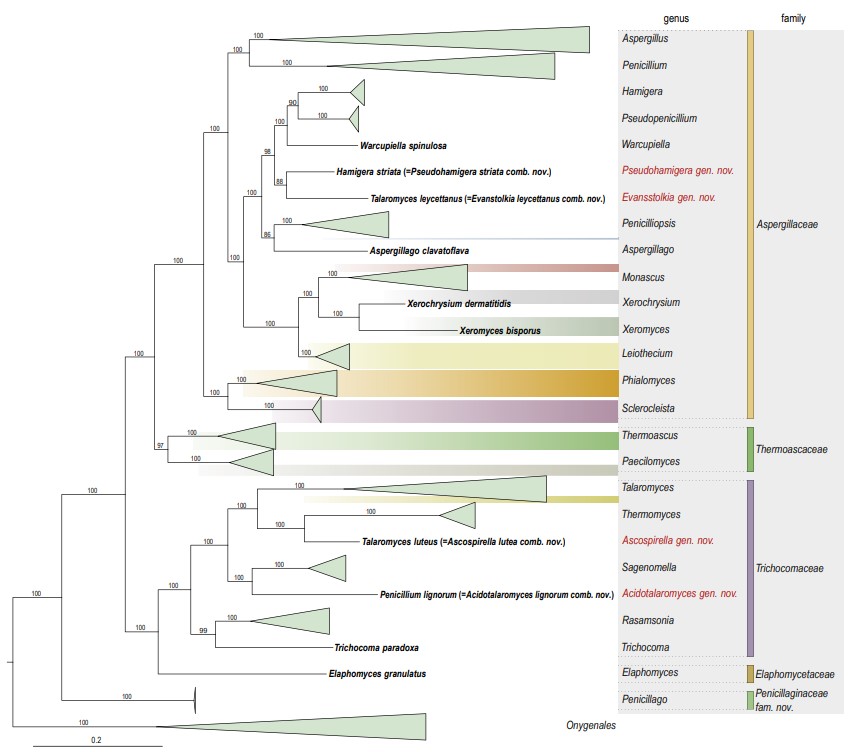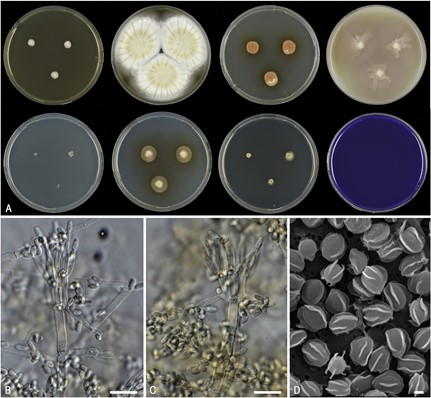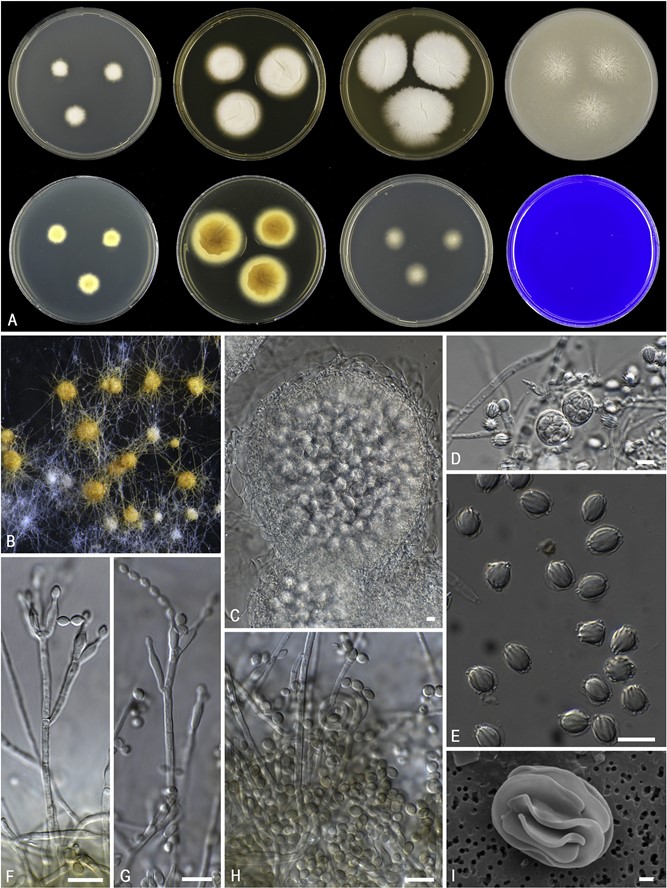Pseudohamigera Houbraken, Frisvad & Samson, gen. nov.
Index Fungorum number: MB832554; Facesoffungi number: FoF
Etymology: Named after Hamigera.
Diagnosis: Phylogenetically distinct. Conidiophores penicillium-like, monoverticillate or biverticillate; conidia pale grey; ascospores ellip- tical with walls bearing a series of wavy, longitudinal flanges or frills. Mesophilic.
Type: Penicillium striatum Raper & Fennell
Notes: – Pseudohamigera is phylogenetically most closely related to Evansstolkia (Fig. 1), a newly erected genus to accommodate Talar- omyces leycettanus (see above). The ascospores of Pseudohamigera somewhat resemble those of Evansstolkia (Figs. 5 and 9). The main difference between those genera is their optimum and maximum growth temperature. Pseudohamigera is a mesophile with an optimum growth temperature between 25 and 30 °C and a maximum around 37 °C; Evansstolkia is thermotolerant to thermophilic (optimum around 40 °C; maximum around 55 °C). Hamigera and Pseudohamigera differ mark- edly from each other in the ornamentation of their ascospores and in their conidial state. The ascospores of Pseudohamigera have 8–12 longitudinal striations while those of Hamigera are pitted. Furthermore, the asexual morph of Pseudohamigera is penicillium-like, and Hamigera has a merimbla-type conidiophore. Stolk & Samson (1971) already mentioned that these differences would justify classifying H. striata (= P. striatum) and H. avellanea in separate genera, but this was deferred at that time. Warcupiella differs from Pseudohamigera by the production of conspicuously spiny ascospores, without a trace of a furrow or equa- torial ridge. Furthermore, Warcupiella produces a raperia-type (asper- gillus-like) asexual morph.

Fig. 1. Combined phylogeny using nine loci (RPB1, RPB2, Cct8, Tsr1, CaM, BenA, SSU, LSU, ITS). Clades in the phylogram are collapsed showing the relationship between genera and families in the Eurotiales. The phylogram is based on 263 species belonging to the order Eurotiales and 16 species from the order Onygenales (used an outgroup). The species used in the analysis can be found in Supplementary Fig. S1 and Supplementary Table S1.

Fig. 5. Morphological characters of Evansstolkia leycettana (CBS 398.68T). A. Colonies from left to right, after 7 d at 37 °C unless stated otherwise (top row) MEA 25 °C, MEA, YES, OA; (bottom row) CYA 25 °C, CYA, DG18, CREA. B– C. Conidiophores and conidia. D. SEM micrograph of ascospores. Scale bars: B–C = 10 μm; D = 1 μm.

Fig. 9. Morphological characters of Pseudohamigera striata. A. Colonies from left to right, after 7 d at 25 °C (top row) CYA, YES, MEA, OA; (bottom row) CYA reverse, YES reverse, DG18, CREA. B. Ascomata on OA after 8 wk at 25 °C. C. Ascoma and asci. D. Asci and ascospores. E. Ascospores. F–G. Conidiophores. H. Conidia. I. SEM micrograph of an ascospore. Scale bars: C– H = 10 μm; I = 1 μm.
Species
Penicillium striatum
